
The Business of Fashion
Agenda-setting intelligence, analysis and advice for the global fashion community.

Agenda-setting intelligence, analysis and advice for the global fashion community.
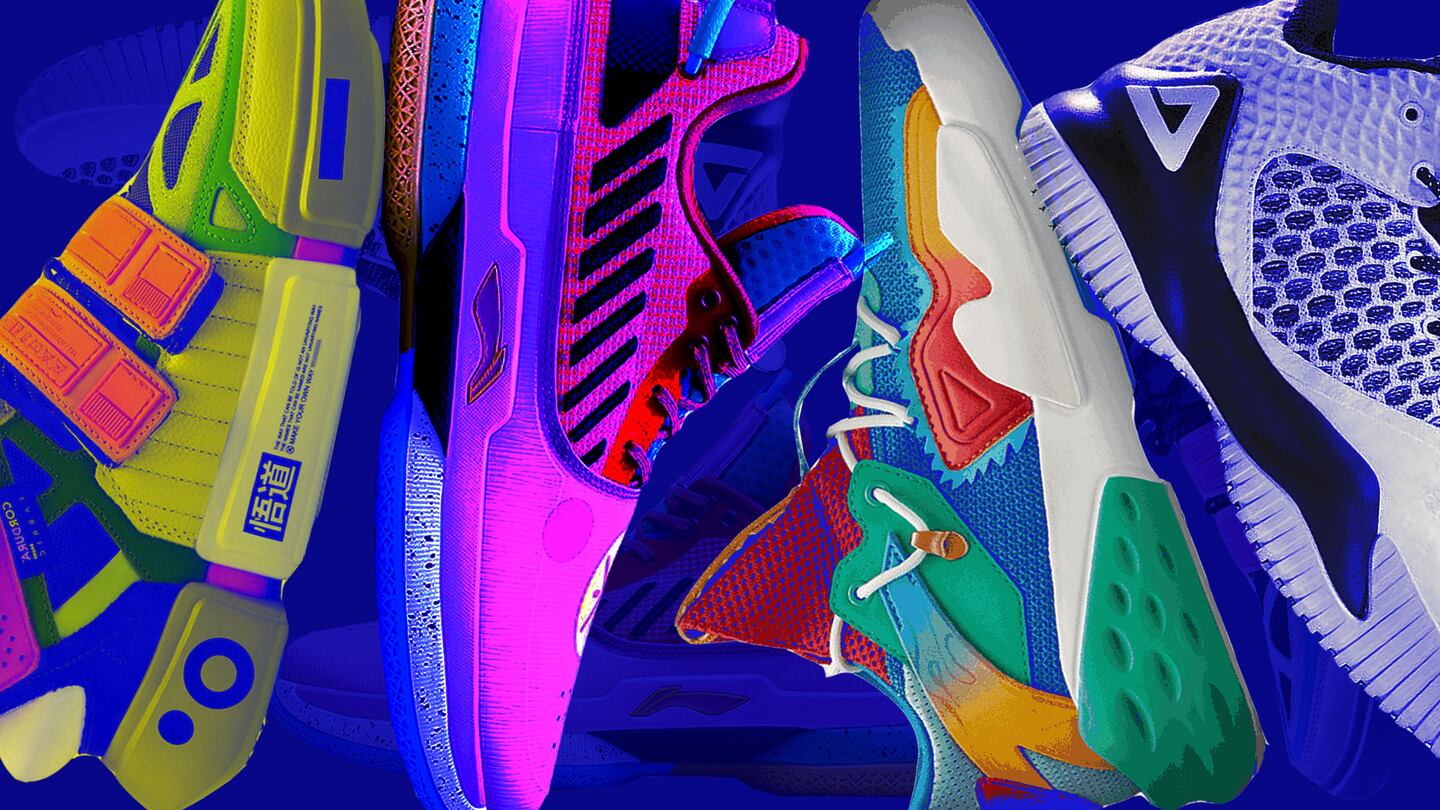
SHANGHAI, China — Over just one weekend this month, more than 20,000 people flocked to Shanghai's West Bund Art Center. As temperatures climbed in the Chinese megacity, it wasn't the heat that drove people to the aircraft factory turned exhibition hall, but hype.
The crowd magnet was Sneaker Con: a travelling gathering for so-called sneakerheads to flaunt, buy, sell, trade, customise and authenticate their rarest Air Force 1s and Yeezys. In the bustling “trading pit,” a second hand vendor named “Sneakers Ruined My Life” updated over a hundred deadstock pairs daily; for those with a budget exceeding a few million yuan, a pair of rainbow-hued Jordans was up for grabs.
China is an ideal breeding ground for sneaker fever. According to the nation's sports industry platform Sports.cn, its sneaker market is second only to that of the US. As Gartner L2's Senior Research Editor Liz Flora put it, "The 'It' sneaker is the new 'It' handbag in China."
A Brief History of Hype
ADVERTISEMENT
"I got into collecting sneakers because of basketball stars," says Chow You, a 27-year-old sneaker reseller based in Nanjing. Chow started his collection in 2004, and though he only has 100 pairs of his own (a humble count compared to many sneaker fanatics), he's resold over 100,000. "China's sneaker culture hasn't been around for a long time, but the market is more dynamic."
Clot Co-Founder Kevin Poon recalls seeing evidence of China's nascent sneaker culture as far back as 2005, but it wasn't until recently that the market truly took off. That's a blip compared to the US, where the footwear has a socio-political history dating back to the 1920's.
And it was only recently that the frenzy was catapulted East by a culmination of basketball, influencers spanning rap and K-pop, and hit shows such as “The Rap of China” and “Street Dance of China.” The costly hobby of collecting kicks also dovetails nicely with China’s luxury goods market — expected by McKinsey & Co. to account for 65 percent of the luxury sector’s global growth by 2025.
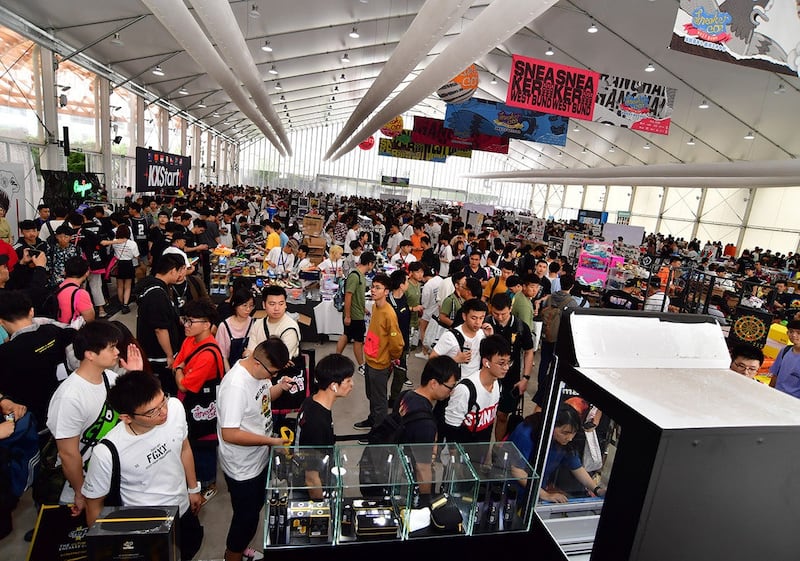
Sneaker Con Shanghai | Source: Sneakernews
What’s more, the hype surrounding most wanted styles — Nike x Off White Air Jordans, for instance — transcends borders and consumer profiles.
“The sneaker market is pretty global nowadays,” says Poon, who doesn’t see a staggering difference between Chinese and American sneaker lovers. “With the internet, everyone can see everything. What does well in the States also does well in China.”
So it's not surprising that China's sneaker resale industry — worth $1 billion according to StockX's Founder Josh Luber — is getting crowded. "Resale value can be enormous and drops can get chaotic," Flora continues. "This is exacerbated by China's tariffs on imports and the grey (cross-border shopping agent) market, which make the monetary incentive even higher for people planning to resell in China."
While US-based StockX eyes local partnerships, rival Stadium Goods has partnered with local giant Alibaba's e-tailer Tmall for three years. Not to mention local resale platforms such as Douniu, Nice and Du, whose latest round of financing in April nabbed it a post-investment valuation of $1 billion. In March, Yoho! launched trading platform UFO, armed with a blockchain-powered traceability solution to combat counterfeits.
ADVERTISEMENT
The sneaker market is pretty global nowadays. What does well in the States also does well in China.
As the array of resale apps indicate, China’s sneaker boom can also be traced back to the country’s growing middle class and discerning consumption habits, helping to blur the line between consumer and collector. “China is going to become a sneaker capital, there’s no doubt about it,” says Yoho! Boy’s Executive Editor in Chief Memphis Wang. “The country’s appetite for consumption is unrivalled...why would sneakers be an exception?”
This is both a challenge as well as an exciting opportunity for new brands, publications and events. Sneaker Con, Yoho!'s Yo'Hood and Innersect are just a few of the fairs and gatherings aimed at uniting Chinese streetwear fans. Luxury players — from Balenciaga to Moncler — are also tapping the sneaker market to great effect.
“We can see that luxury brands are in the streetwear game for the long haul, with their choices to appoint creative directors known for their streetwear credentials,” Flora adds.
New Icons and Old
China’s sneaker boom has rendered the market a Wild West for brands and retailers, where brand loyalty has become a foreign concept.
Poon considers himself a Nike loyalist and has collaborated with the giant on designs for Clot. “I don’t think people [in China] are that conscious about what brand it is,” says Poon, who’s own sneaker collection exceeds the 2,000 pair mark. “As long as the design’s super fire, people will buy multiple brands.”
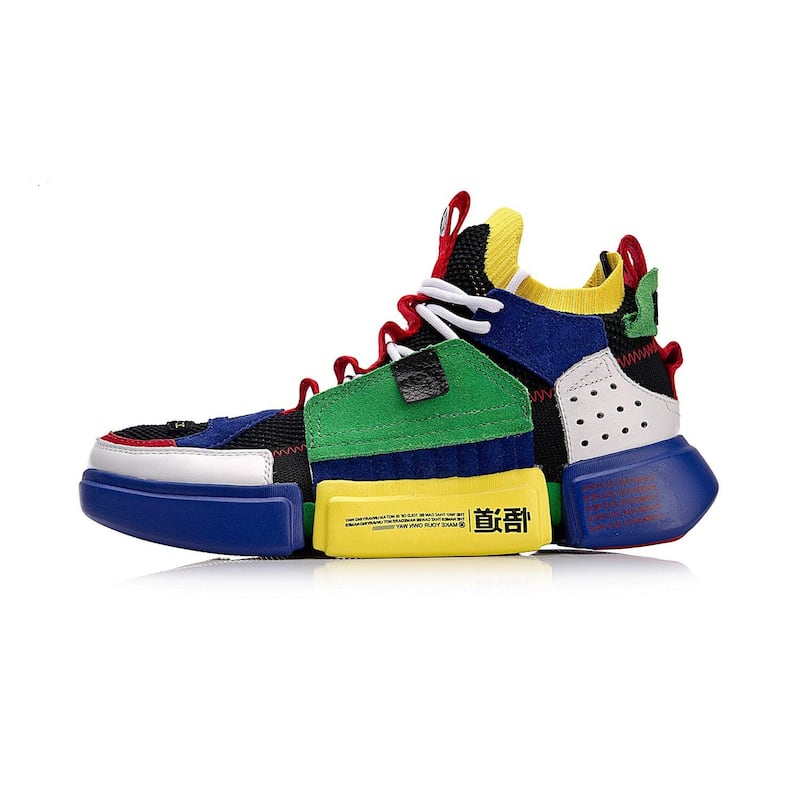
Li Ning's Essence sneakers | Source: Li Ning
Meanwhile, homegrown players are making a play for Chinese wallets. Just last week, activewear brand Anta released a collaboration with Beijing’s Palace Museum ahead of the 2022 Beijing Winter Olympics, inspired by the Forbidden City’s symbolic hues and ornamental interiors.
ADVERTISEMENT
Other local brands include Xtep, CBA, Peak, 361˚ and Li Ning, the 30-year-old Olympian-founded sportswear giant, which in March saw its profits rise 38.8 percent to over $106 million.
In addition to its main line products, Li Ning has been investing in a sneakerhead-friendly premium line, which has graced the runway at New York Fashion Week and will go on to showcase Spring/Summer 2020 pieces in Paris this June. After finding favour with local shoppers, the brand is appealing to western retailers and is now stocked at Selfridges, Ssense and Kith.
Having worked on Li Ning’s premium line since 2017, brand consultant and Adidas alumnus Liad Krispin reckons that at home, the Chinese brand has already toppled the hegemony enjoyed by US brands.
“In China, we’ve done it,” the Berlin-based creative tells BoF, raising Li Ning’s eclectic Essence sneaker as an example. “The sign that it’s reached an iconic level in China is that it’s being copied...there are knockoffs of it everywhere.”
Krispin notes that it will take time for the brand to reach those levels in the west — something it’s working on by developing sneaker franchises: shoe models carried through the seasons with evolving designs to foster brand recognition.
In China, we've done it ... there are knockoffs of it everywhere.
According to Yoho!’s Wang, Li Ning’s Way of Wade model — a collaboration with American basketballer Dwayne Wade — is the homegrown shoe most coveted by sneaker lovers. “Fans are buying the entire collection,” she notes.
However, Wang credits Wade’s own star power for the shoe’s success, and expects that it’ll take a while before other Chinese brands can replicate the shoe’s success.
Perhaps replication is what’s holding Chinese brands back. “Many local brands are following design trends debuted by global giants, and hiring people from those companies,” Wang continues. “I personally don’t think it’s possible to have breakthrough designs that way.”
And amid escalating trade tensions between Washington and Beijing, US' sneaker giants have bigger fish to fry. As President Trump's latest round of tariffs go on to raise costs for Nike and Adidas sneaker fans at home, what are the implications for Chinese brands expanding west?
“I don't think [Chinese companies] will be impacted by the tariffs at all,” says Sabrina Finlay, chief executive of full-service footwear manufacturer Otabo. "Brands such as Li Ning are not currently reliant on foreign markets."
For brands, it doesn't matter if you're from the US or Chinese. "Trump's tariffs aren’t designated towards where the brand originates from, but where the product originates from...there isn't a label that we can put on the shoe that says, 'partially Made in China'."
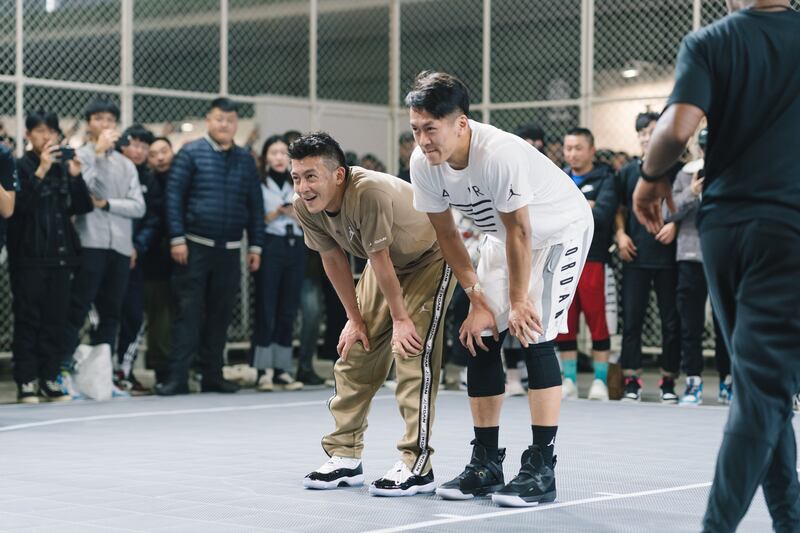
Nike's basketball court at Innersect Shanghai | Source: Courtesy
Rather, Finlay reckons that Chinese brands’ forays into the US will be a chance for marketers to leverage premium brand positioning and reverse Made in China tropes.
But as American footwear brands increase prices at home, the tariffs could worsen their challenges with counterfeits, as factories ramp up operations to supply cheaper (and increasingly higher quality) replicas.
“Brands like Nike have a tier of product that is very high end, and those consumers will accept the tariffs and spend a lot more to get a $300 Nike shoe,” Finlay adds. “But if it's a Nike product that is priced significantly lower and geared towards a larger part of the consumer market, those consumers are much more price sensitive and ten dollars, 20 dollars definitely matters to them.”
Game On
Something Poon, Wang and Krispin agree upon is that China’s sneaker and wider streetwear scene is still playing catch-up to the US. “The culture has existed for so long in the US and it has become really mature,” Wang continues. “China is still catching up and imitating what they see abroad.”
While the local sneaker industry makes up for lost time, China has already become an obvious next stop for brands that have cracked the western market. Poon, who is asked “almost once a day” by sneaker and streetwear brands how they can crack China, says that there isn’t an overarching strategy.
“A lot of people say, we’ll work with a partner, open a thousand stores, but that ship has sailed,” says Poon, who, above all, thinks that for executives and their teams, spending time on the ground is key.
The formula that really works, he suggests, is about turning carefully considered plans into hard graft and well executed strategies. There are few tricks of the trade but certainly no silver bullet; just like the top players in luxury and other sectors tackling China, “you need to work with online and offline, different influencers, get your visibility up, release special products, localise.”
China's sneaker market has the potential to push any luxury brand to release a China-specific style.
As for luxury brands, sneakers are only likely to prove more lucrative as the market matures, and Balenciaga's Triple S, Alexander McQueen's white low tops and the Nike x Off White collection are a few success stories.
“Sneakers are one of our highest selling categories in China,” says Stephen Eggleston, the vice president of Farfetch’s commercial business. “We are still seeing demand for the styles like the Balenciaga Triple S, which have sold well for a few seasons now.”
Wang predicts that more luxury brands will go on to release exclusive sneakers. “Many [brands] are testing the waters for now, but China’s sneaker market has the potential to push any luxury brand to release a China-specific style,” she says.
Meanwhile, Flora warns that luxury brands will need to form better strategies for dealing with sneaker-induced fervour surrounding drop culture, citing Balenciaga's Triple S sneaker drop and alleged discrimination as a cautionary tale.
“Because one of the [shoppers] was Chinese and felt they had been mistreated by store staff, the story went viral in China and caused a huge PR crisis for Balenciaga,” says Flora.“Luxury brands should look to the digital solutions that activewear brands like Nike have developed to make their drops safer, like apps that give people a virtual spot in line.”
Ultimately, the Chinese market could shape up to be just as lucrative for sneaker brands as it is for luxury goods, and is fair game for foreign, local, streetwear and luxury players alike. “Everyone will be considering how to better get a slice of the sneaker cake,” Wang continues. “Whether it’s new designs, or interactive ways of engaging with consumers, I’m excited to see more.”
时尚与美容
FASHION & BEAUTY
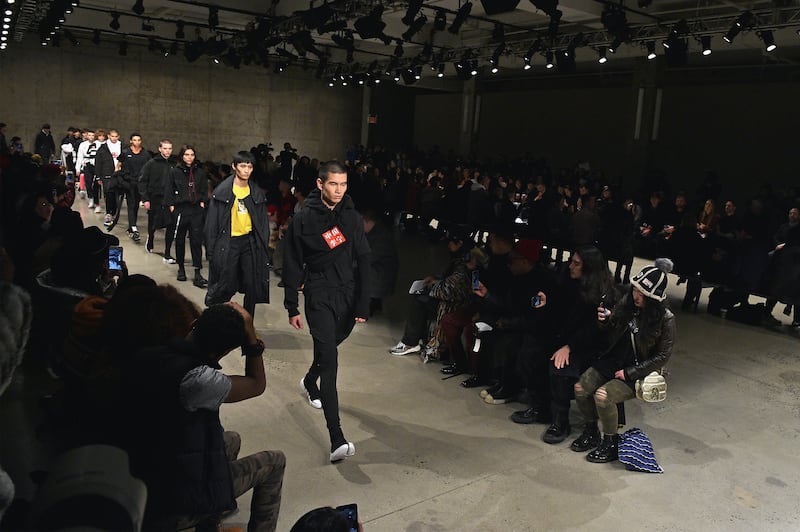
Li Ning's AW 2019 show in New York | Source: Getty Images
Li Ning’s MSCI Milestone Could Bring In $237 Million
As of May 28, sportswear giant Li Ning is one of 31 new companies included in Morgan Stanley's China Index (MSCI): a benchmark for investors that evaluates the performance of a range of Chinese companies listed inside and outside the country. After fast fashion behemoth HLA, Li Ning is the second fashion group to be included, and a subsequent report published by Morgan Stanley estimated that the company is primed to receive about $237 million in capital as a result of the milestone. It's been a big week for Li Ning: on May 22, it opened its first self-built factory in Guangxi for R&D and manufacturing after outsourcing production for the last 30 years. (BoF China)
Tmall’s Ahava Livestream Sells 14,000 Masks In One Minute
Alibaba-owned Tmall's brand latest activation involved flying six loyal customers to the Dead Sea and beauty brand Ahava's factory, and hosted a two-hour-long livestream for prospective customers. It was a huge success: Ahava sold out all 14,000 of its newly launched mud masks a minute into the livestream. The project is part of Tmall's initiative aimed at giving consumers a glimpse into where products are sourced, and over 200 brands including Lululemon and Burberry have opted into the experience-centric marketing strategy. (Alizila)
L Catterton-Backed GXG Owner Goes Public
Mulsanne Group, the owner of five Chinese fashion brands including flagship menswear brand GXG and GXG Jeans, filed for an IPO in Hong Kong on May 27. The 12-year-old group is backed by L Catterton Asia — the consumer-focused private equity firm backed by luxury giant LVMH — and raised over $149 million from the likes of Credit Suisse and Citigroup. At present, Mulsanne operates over 2,250 points of sale across China and was the second best-selling menswear brand in last year's Tmall Singles Day shopping festival. The group has stated its intention to expand beyond menswear through incubating and acquiring new brands, but hasn't provided a timeline. (BoF China)
科技与创新
TECH & INNOVATION
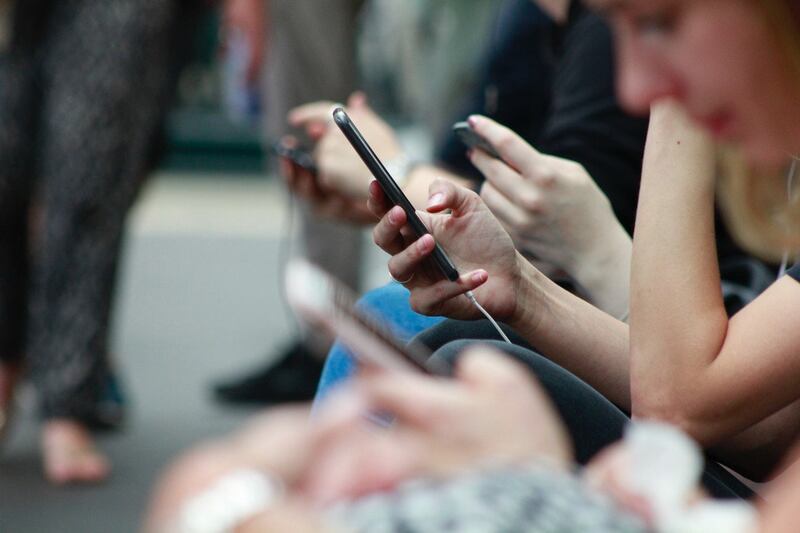
Source: Robin Worrall
Welcome to the Tech Cold War
In recent news, the likes of Google, Qualcomm, Panasonic and Broadcom have cut off dealings with the Chinese technology giant in line with an edict from Washington. The crackdown may grow into a ban on sales to other Chinese surveillance companies, and other American players are expected to follow suit during the US government's 90-day grace period for transactions with Huawei. This could mark the start of a "digital iron curtain" and the superpowers pivoting towards protectionist tech policies and a divided tech world, but it's unclear which side other countries will take: Britain and Germany have yet to follow the US' lead, and poorer countries are likely to succumb to Huawei's cheaper 5G offerings. (NYT)
Alibaba Could Raise $20 Billion Via “Homecoming” Listing
Alibaba Group Holding Ltd. — the group behind China's "most valuable brand" — is considering a second listing on the Hong Kong Stock Exchange, say sources close to the matter. After a blockbuster $25 billion New York debut in 2014, the giant could appease investors at home with a $20 billion share sale as relations between Beijing and Washington remain volatile. Sources have said that the e-commerce company is working with financial advisers on the planned offering, and an application could be filed as early as the second half of 2019. Alibaba has declined to comment. (Tech in Asia)
New Regulations Tackle on Video Streaming Platforms
The Cyber Administration of China (CAC) is rolling out new measures to limit underage users' screen time on video streaming and short video platforms including Weibo, Tencent Video, iQiyi and Bilibili. On May 28, the CAC announced new rules requiring platforms to roll out anti-addiction systems — cracking down on time spent watching videos as well as certain types of videos — before June 1, and introduce "youth mode" functions featuring educational content. While the CAC is planning to expand the rules to livestream platforms, it's unclear how streaming sites in particular will implement the new system considering how easy it is for people to access content right now. (Technode)
消费与零售
CONSUMER & RETAIL
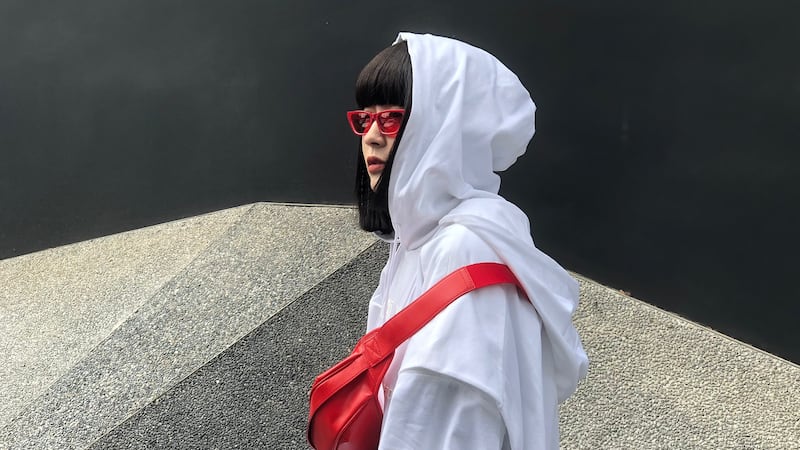
Chinese influencer Fil Xiaobai | Source: Courtesy
Brands Shouldn’t Underestimate the Importance of Chinese KOLs
Influencers, known as KOLs (key opinion leaders) in China, can make or break a brand — but why do they have so much power over local consumers? Firstly, China's digital-first luxury market and its supporting social media platforms are skewed towards promoting popular (and therefore KOL-centric) content. Consumers also head to social media to inform luxury purchases — regardless of whether the influencer is being paid by a luxury brand to promote the product — and being relatively new to the sector because of their age and the country's growing middle class, look to KOLs for direction. As such, brands need KOLs more than they know, and should approach them as a strategic marketing tool rather than accessorial promotional channels. (Jing Daily)
Tmall Gears Up For “Biggest 618 Festival Yet”
Though the 618 shopping festival — that takes place annually on June 18 — was conceived by retail giant JD.com as a contender to Alibaba's 11:11 Singles' Day shopping extravaganza, Tmall has been cashing in on the occasion in recent years and this year will be no exception. According to the e-commerce platform, 2019's 618 festival will be comparable to Singles' Day, and Tmall has released nearly 30 million new products in the lead up to the big day. As is the case for Singles' Day, foreign brands can expect to win big: on Monday, the e-tailer published a list of 100 star products it expects to make bank on June 18, including goods from Estée Lauder, Adidas, Starbucks and Dyson. (BoF China)
Xiaohongshu Introduces Rating System and Product Awards
Amid troubles with bot accounts and fake ratings, Xiaohongshu is attempting to revv up its credibility as Chinese millennials' go-to app for shopping inspiration. The social e-commerce platform this week introduced a new "little red heart" rating system for over 500,000 users and 3,108 products. Users — screened through account and purchasing data — will be selected as authorities to assess a product's score and provide a ranking for the best products to buy. The platform will also be giving out awards to top rated favourites, to serve as a Chinese equivalent to Allure's Best Beauty Products and Japan's Cosme rankings. (Ebrun)
政治、经济、社会
POLITICS, ECONOMY, SOCIETY
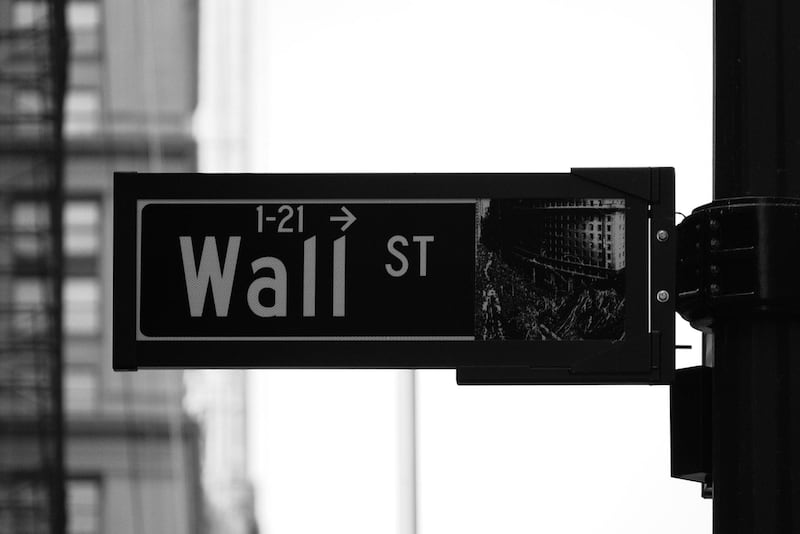
Source: Rick Tapp
The Trade War’s Next Battleground: Wall Street
Citing a lack of transparency in Chinese companies, trade experts such as Stephen Bannon are urging President Trump to rethink China's access to the US financial markets and Wall Street in particular. Though Chinese companies have raised tens of billions of dollars through US markets in recent years, executives may be forced to reconsider their reliance on Wall Street if the decoupling becomes a reality. Though the Trump administration hasn't announced any moves to cut off China, experts are now advising companies to ween off Wall Street and avoid risk exposure. (NYT)
Chinese Tourism to US Drops for First Time In 15 years
For the first time since 2003, Chinese travel to the US fell 5.7 percent in 2018 to 2.9 million visitors, says the National Travel and Tourism Office. The antagonism between Beijing and Washington is affecting American destinations, and economic uncertainty has Chinese travellers opting for destinations closer to home. While experts are optimistic that China's growing middle class will continue to boost tourism flow, destinations that have come to rely on Chinese spending power are upping the ante and introducing Chinese mobile payment capabilities and WeChat guides. (AP)
Cathay Pacific Same Sex Couple Ad Banned From Hong Kong’s Hot Spots
An image for the airline's latest campaign featuring two men walking hand in hand on a beach has been the only visual not shown in prime locations in Hong Kong, and two leading local transport companies (the airport authority and metro corporation) have refused permission for the ad, SCMP reports. Though Asian neighbour Taiwan recently became the first Asian player to legalise same-sex marriage, Hong Kong is lagging behind and executives and lawmakers alike are calling for change. (SCMP)
China Decoded wants to hear from you. Send tips, suggestions, complaints and compliments to zoe.suen@businessoffashion.com.
With consumers tightening their belts in China, the battle between global fast fashion brands and local high street giants has intensified.
Investors are bracing for a steep slowdown in luxury sales when luxury companies report their first quarter results, reflecting lacklustre Chinese demand.
The French beauty giant’s two latest deals are part of a wider M&A push by global players to capture a larger slice of the China market, targeting buzzy high-end brands that offer products with distinctive Chinese elements.
Post-Covid spend by US tourists in Europe has surged past 2019 levels. Chinese travellers, by contrast, have largely favoured domestic and regional destinations like Hong Kong, Singapore and Japan.